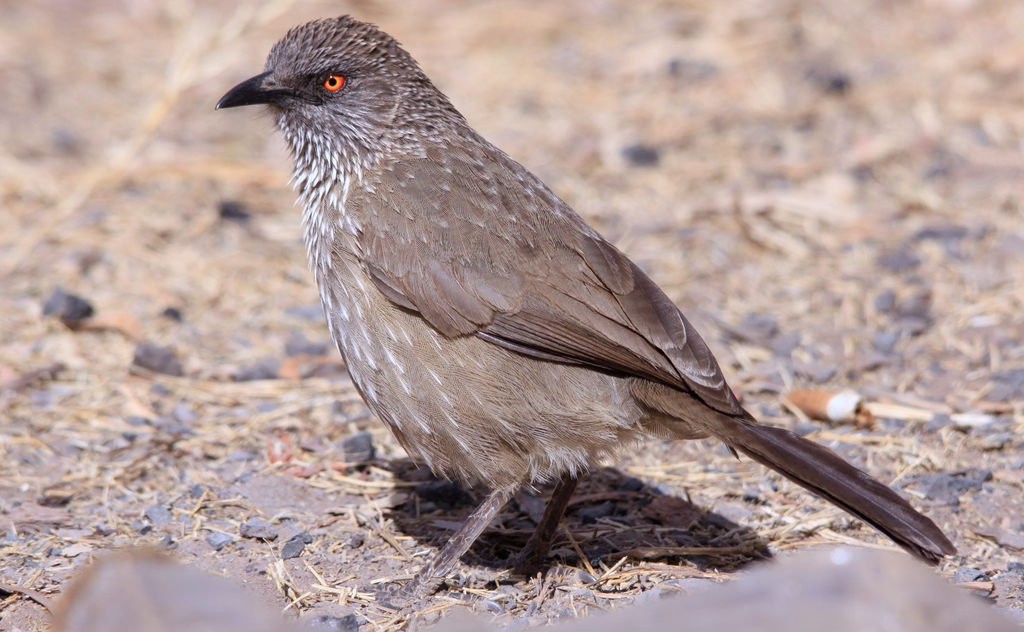Arrow-marked Babbler
A species of Turdoides Scientific name : Turdoides jardineii Genus : Turdoides
Arrow-marked Babbler, A species of Turdoides
Botanical name: Turdoides jardineii
Genus: Turdoides
Content
Description General Info
Description
The arrow-marked babbler is a medium-sized babbler, 22 to 25 cm (8.7–9.8 in) in length and weighing 56 to 85 g (2.0–3.0 oz). The common name for the species is derived from its plumage, which is brownish-grey above and lighter below, with white tips to the feathers on the throat, neck and head. The iris is bright red and the inner ring of the eye bright yellow or orange. The males and females are identical in appearance. Juveniles have brown eyes, and less arrow-shaped streaking on the breast. 
Size
25 cm
Nest Placement
Tree
Feeding Habits
Arrow-marked Babbler primarily consumes a variety of invertebrates such as termites, ants, and grasshoppers, alongside fruits, seeds, and nectar. They forage on the ground or in low bushes, often in groups, using their feet to hold larger items. Caterpillars and grasshoppers dominate their nestlings' diet.
Habitat
Arrow-marked Babbler resides in various dense vegetation types, prominently in subtropical or tropical dry forests, shrub-dotted savannas, and moist thickets. It thrives in mixed bush and tree savannas, typically inhabiting the underbrush of open woodlands, the peripheries of dry riverine forests, and reedbeds. Arrow-marked Babbler is adaptive to altitudes ranging up to 1830 meters, occasionally extending to 2315 meters.
Dite type
Omnivorous
General Info
Feeding Habits
Bird food type
Behavior
The arrow-marked babbler lives in social groups of between 3 and 15 birds (six being the average) that defend large territories, with the size of the territory being dependent upon the number of individuals in the group. They feed on insects, spiders and sometimes snails and lizards, as well as fruits. Foraging occurs near the ground, sometimes in association with other babblers or bulbuls. 
Distribution Area
It is found in Angola, Botswana, Burundi, Republic of the Congo, DRC, Gabon, Kenya, Malawi, Mozambique, Namibia, Rwanda, South Africa, Swaziland, Tanzania, Uganda, Zambia, and Zimbabwe. Its natural habitats are subtropical or tropical dry forest, dry savanna, and subtropical or tropical moist shrubland. 
Species Status
Not globally threatened.
Scientific Classification
Phylum
Chordates Class
Birds Order
Perching birds Family
Laughingthrushes Genus
Turdoides Species
Arrow-marked Babbler 